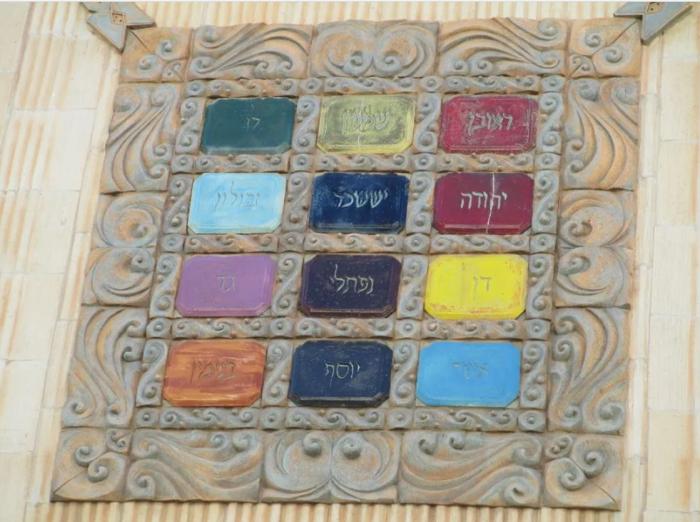
Who decided?
For centuries people from across the globe have used different coloured gemstones to mark occasions, to send subliminal messages, to show status, to treat illness and even to prevent drunkenness. In some cases, gem-related superstitions are contradictory. Opal, for example, was thought by some people to bring bad luck, while others regard it as a gemstone of hope.
Where did the idea of birthstones come from, though? – and who decided which stones were significant?
4th Century
Some sources state a Priest discovered the concept of birthstones while studying The Book of Exodus and others quote an earlier roman historian with similar name. Either way, in Exodus, Moses’ older brother, Aaron (the first High Priest of the Hebrews) had a breastplate that he used to communicate with God. This breastplate was said to be adorned with 12 stones. It is believed the stones were as follows: raw carnelian, chrysolite, emerald, turquoise, sapphire, amethyst, jacinth, agate, crystal (quartz), raw beryl, lapis lazuli, and jasper.
However, in ancient times stones were named for their colour and not their chemical makeup. For instance, peridot was often misidentified as emerald. So the exact stones could not be verified.
Some believe these represented the twelve original tribes of Israel. Among Christians, on the other hand, twelve symbolic gems represented the twelve apostles.
In the New Testament, 12 foundation stones were given specific qualities related to Christ:
| Jasper - Satisfaction | Sardony - Strength | Topaz - Uprightness |
| Sapphire - The Soul | Sardius - Readiness for the church | Chrysophase - Sternness toward sinners |
| Chalcedony - The Truth | Chrusolite - Excellence of his divine nature | Jacinth - Dignity |
| Emerald - Kindness & Goodness | Beryl - Control of the passions | Amethyst - Perfection |
Josephus was the person who decided they could also represent the 12 months of the year—as well as the 12 zodiac signs. It is important to note that each of these stones were believed to have protective and healing properties, and with Josephus’ decision came the belief that each stone’s powers were amplified during the month it was assigned.
5th Century
The Hindus were developing their own system in India around the 5th century with a text called the Ratna Pariksha. It identified the Navaratna, meaning nine gems in Sanskrit. These gems were associated with days of the week, Gods, and celestial bodies. The nine gems were: ruby, pearl, coral, emerald, yellow sapphire, diamond, blue sapphire, hessonite and cat’s eye. It was believed wearing stones that best fit your astrological chart would place you in harmony with the universe and protect against negative cosmic forces.
8th or 9th Century
This was when it appears people around the world started wearing birthstone jewellery, though many of these gems were strictly reserved for royals. During this time, religious treaties were written associating particular stones with apostles.
16th to 18th Century
The idea that each person should wear a gemstone corresponding to their month of birth is a relatively modern idea within the history of gemstones. It was first noted among Jewish gem traders in 18th century Poland.
In 1912, the National Association of Jewelers of America (hence the American spelling) gathered in Kansas and defined a standardised list of birthstones. This list remained unchanged – but has had additions as availability decreases, stones become rare and alternatives are introduced.
For example, in 1952, alexandrite, tourmaline, zircon and citrine were added. 2002 brought tanzanite and 2016 added spinel.
So, we have three lists of birthstones:
Ancient: Widely recognised for thousands of years; the origins, 9 or 12 stones, not able to be verified further than the above.
Traditional: includes the origins and stones available from the last 500 years, these established themselves through the 16th to 18th centuries
Modern: As defined by the National Association of Jewelers of America, this also grows to include gems that have only become available in the last 100 years or so.
As there are numerous gemstones available for use today, birthstones are often categorized according to colour instead of specific stones.
Although no longer widely believed to have religious significance, some experts claim the stones do possess healing powers. In addition to specific powers, there are also long-standing superstitions regarding birthstones. For example, a bracelet with birthstones will supposedly bring the wearer different gifts depending on where it is worn. Worn on the left wrist, a birthstone bracelet is said to promote openness; worn on the right wrist, the birthstone will bring self-confidence.
If you want to be a pedant, birthstones were originally associated with the Julian calendar introduced by the Romans under the power of Julius Caesar back in 46BC. There were still 365 days, with the exception of every fourth year where there were 366. By the late 16th Century the Gregorian calendar (named after Pope Gregory XIII) succeeded this version - but it had to correct the inaccurate measurements due to leap years that took place over 1700 years. This resulted in the removal of 10 days from the calendar. A few years later Europe followed suit, but Russia didn't remove 13 days until 1922! So..... everything got a little out of kilter.
There is actually also a "mythical birthstone list" which has Tibetan roots going back over a thousand years and an Ayurvedic birthstone list from ancient Indian medicine and beliefs dating back to approximately 1500BC
Of course, there’s the matter of Astrology – so in fact one calendar month will actually include two signs of the Zodiac…. But that’s enough rabbit holes!
Resources:
International Gem Society
National Association of Jewelers of America
NAJ UK
Farmers Almanac

